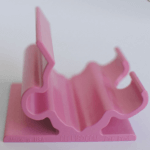As we embrace the possibilities of 2024, the injection molding industry is undergoing significant shifts driven by technological innovations, sustainability demands, and global market dynamics. In this concise exploration, we'll dissect key trends and market insights, offering businesses essential information to make informed decisions in this dynamic landscape.
1. Technological Advancements:
The injection molding sector is undergoing a technological revolution, with Industry 4.0 technologies leading the charge. Automation, smart manufacturing, and the integration of IoT devices are enhancing efficiency and product quality. Manufacturers incorporating these advancements stand to gain a competitive edge in 2024 as these technologies reshape production processes and reduce downtime.
2. Sustainable Practices:
Environmental considerations are steering the industry towards sustainable solutions. Consumers are increasingly demanding eco-friendly products, pushing manufacturers to adopt practices such as using recycled materials and reducing waste. Sustainability is no longer just a trend; it's a business imperative. Companies prioritizing green practices can expect increased market share and heightened customer loyalty.
3. Material Innovations:
Material choices are crucial in injection molding, and 2024 will witness a surge in the use of advanced materials. Bioplastics and bio-based polymers are gaining traction due to their environmental benefits and enhanced performance characteristics. The industry is shifting towards lighter, more durable materials with improved heat resistance, catering to diverse applications across various sectors.
4. Global Market Expansion:
Geographical shifts in market dominance are notable, with Asia-Pacific and Latin America emerging as hotspots for growth. Increased industrialization, rising consumer demand, and favorable government policies make these regions attractive for market expansion and strategic partnerships. Businesses should keep a keen eye on these areas for potential opportunities.
5. Challenges in the Industry:
However, 2024 is not without its challenges. Global supply chain disruptions, influenced by geopolitical tensions and natural disasters, are impacting production and delivery schedules. Navigating regulatory compliance, especially regarding environmental standards and safety regulations, adds complexity to industry operations.
In summary, the injection molding industry is on the brink of transformative changes in 2024. Technological innovations, sustainability imperatives, and global market shifts are reshaping the landscape. Businesses that adapt to these trends and address challenges proactively are well-positioned to thrive. By staying informed about industry trends and market insights, manufacturers can make informed decisions, capitalize on emerging opportunities, and contribute to the sustainable future of the injection molding industry.


